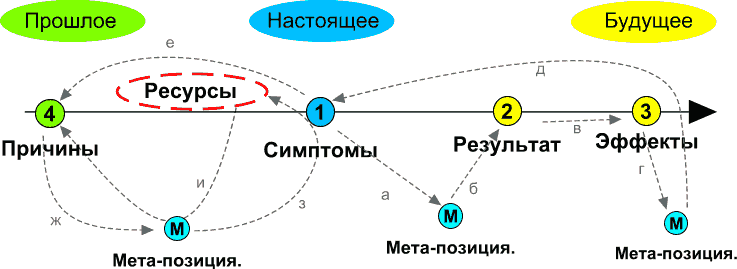NLP: The SCORE Model
Hello everyone! Stalilingus here! After my vacation, I decided to treat you to a bunch of interesting materials—we have some catching up to do, right? Let’s get started!
Today, we’ll talk about one of the ways to find solutions to problems using the SCORE model.
What Is the SCORE Model?
Like any model, SCORE has its specific area of application—it’s especially useful for gathering information in the context of change and problem-solving.
Does this sound like you?
- I’m stuck and don’t know what to do.
- I’m a good person, but everyone else is bad.
- I want to buy a new car, but I just can’t get myself to do it.
- I have a relationship with this person, but it’s complicated… I need to figure it out.
- I want to make my life more interesting.
If so, the SCORE model can help you sort things out!
The SCORE model describes key points you need to clarify—its name is an acronym for these points:
- Symptoms: current state, symptoms
- Causes: reasons
- Outcomes: result, desired state
- Resources: resources
- Effects: effects, consequences
Let’s Break It Down
The following explanations are adapted from the most relevant materials I could find on this topic.
Symptoms / Current State
This is your current situation—what exactly you want to change. Since NLP focuses on sensory-based evidence, the main focus is on these “symptoms.”
For example: “Lack of motivation to exercise.” Symptoms: when you think about going to the gym, you feel heaviness in your body, tension in your stomach, your muscles relax, you want to think about something else, and you crave a tasty snack.
Causes
These are the reasons for your current situation—past experiences that “taught” you this behavior.
In many cases, it’s not necessary to dig into the causes—NLP often prefers to work with the future rather than the past. So if the history behind your current state isn’t very relevant or you can’t clearly remember or define it, you can skip this step.
Example: As a teenager, my father always made me go running with him, whether I wanted to or not, or had the time. Now, I associate any kind of sport with being forced.
Another example: “A man didn’t like semolina porridge as a child, but was forced to eat it. Now, as an adult, he’s afraid of flying. What’s the connection? Turns out, when he ate the porridge, there was a Soviet Aeroflot poster with a stewardess in the kitchen. The unpleasant feelings from the porridge became linked to the image. This was uncovered under hypnosis.”
Outcome / Desired State
What do you want to achieve? What’s your goal, or what do you want “instead”?
For example: I want to exercise—at least go to the gym three times a week.
Resources
What can help you reach your goal? Resources can be from your past, present, or future. They can also be things you need to learn.
Examples: Calmness, confidence, the belief that “I need to exercise,” the desire to be “in shape,” willpower, persistence.
Effects
What are the consequences of achieving your goal? Consider both for yourself and for those around you.
Remember, consequences can be both positive and negative. It’s useful to evaluate and understand them to decide if your goal is worth pursuing, or if it needs to be adjusted—or even abandoned. The “Cartesian Coordinates” technique can help with this.
For example: If I exercise three times a week, I’ll lose weight, feel better, and get stronger. Hopefully, my shortness of breath will go away. But I’ll spend a lot of time on it, might not have time for other things, and my muscles will be sore after workouts. Plus, it will significantly change my life, and there’s always a risk of injury.
How to Use the SCORE Model
SCORE simply outlines the key points for gathering information—but you don’t always have to go through them in order. Sometimes, after exploring the consequences, a person might change their desired outcome, suddenly remember something important from the past, better understand their current state, or decide to add new resources. Gathering information is a dynamic process.
This model is useful for consultants and coaches working with clients, as well as for self-reflection when setting goals or dealing with problems. Often, problems are resolved during the information-gathering process itself—the person finds their own way to change. And if a solution isn’t found right away, using the SCORE model helps you create the most suitable intervention plan.
Good luck! Work on yourself and achieve results that will surprise not only you, but also those around you!
Stalilingus



